The movie Beyond the dream is a romantic movie setted in Hong Kong(Tuen Mun).It is about the main character -Lok,he had schizophrenia,the symptoms of this disorder are having illusion ,hallucination ,delusion etc.For Lok, after he accidentally met Yip Lam who is a clinical psychologist on the street ,he create an imaginary girlfriend in his mind based on Yip Lam’s appearance, this imaginary girlfriend is called Yan.Lok did not realise Yan was not real and was just a illusion until he try to record when Yan was talking to him, he then found out there are no sounds except environment sounds,by that time he knew he was having schizophrenia again. Lok sought help from Yip Lam ,his clinical psychologist,yet they fell in love and Lok was forced to choose between Yip Lam and Yan, the ending of the movie is an open ending.
A remarkable place filmed is Butterfly stop. Butterfly stop is located in Tuen Mun and is a stop on Light rail Transit (LRT)along the 610,615 and 615P route.It is located in a small community far from those big hectic cities but it also blend in well with this small town.Lok was alone ,finding true love in this town,love is nowhere to be found and appears to be illusory.The beautiful light of the light rail , the trajectory of it and it’s slow speed brings out love can be very beautiful,calming and soothing.Yet those doors of the light rail make it hard for people to see what is inside , love is hard to catch.In the movie, Lok cannot find his love,just like many other people ,they thrive for it but they cannot get it,even they find their love , whether the love is real or not is hard to tell and people may lose it easily.Lok had schizophrenia before , he was desperate for love but he did not dare to start a relationship with anyone.When he started to date Yan , the love between them is beautiful and very sweet ,just like the light rail station in daytime , it looks romantic,just like those japanese railway. Yet, Yan is too good for him to a point Lok thought she is not real. So when Lok realised Yan was a hallucination at the Butterfly stop, he was relieved but also sad at the same time.The movie also used long shoot and large aperture to film that scene to create an atmosphere that is between realistic and unrealistic,blur and misted.
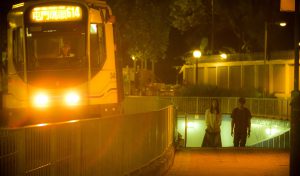
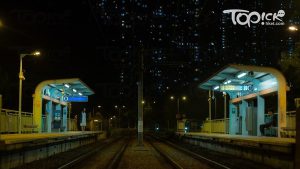
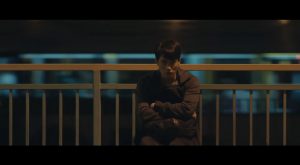
However the Butterfly stop is in fact very busy in the daytime in real life,there are people waiting on the stations,unlike how butterfly stops are presented, it is noisy as there are some announcements made by the LRT and those bell sounds when the train arrives at the stations. The light rail is presented very beautiful in the film while in real life it is not as good as how it is shown in the film.The train is normal in reality and those lights do not give a fantasy feeling to people . However when it is night , it shares some similarities with the train in the film.It is more quiet than in the morning and there is not many people by night. Still, the atmosphere is a bit different because there is a road next to the stop and I can hear the cars’ sounds.
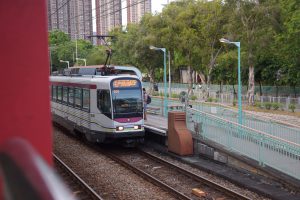
Li, Enid Geo 3035782023
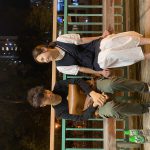
You have made an effort to describe Butterfly stop in the film and how it serves as the space of romantic encounter. It is not entirely clear how this occurs in the space and how the space contributes to the narrative plot, except that long and wide shots are used to create “an atmosphere that is between realistic and nonrealistic, blur and misted (misty?).” It would be useful to articulate more clearly what is this in-between kind of atmosphere. I am also curious that since the analysis of the space is through the night-time scene, it is not clear whether you extend your fieldwork into the night. Your discussion would offer more analytical insights if you were to study the day and night time description of the site comparatively in the film and in reality. In your final statements, you allude to the film’s audio and visual depiction of the light rail station in aestheticizing the otherwise rather ordinary infrastructure of mobility. How does the film present the light rail as “very beautiful” while “in real life it is not as good as how it is shown in the film”? A closer comparative analysis of the film and actual site with reflection on Augé’s study of places and non-places could offer further insights. A note on the writing: check for typos, grammar and syntactic expressions.